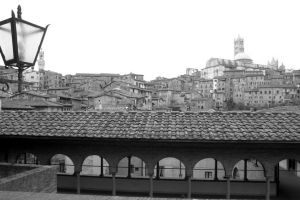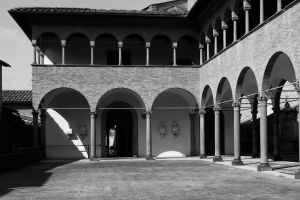The Shrine of the House of Saint Catherine
History
Located in the Fontebranda district and belonging to the woolworkers guild, the house is divided into three levels. In the first half of the fourteenth century it was rented to Catherine’s father, the cloth-dyer Jacopo Benincasa, as a warehouse for dyeing cloth and as a home for his large family.
After the Benincasa family fell into decline, the property passed into the hands of another dyer, until in 1466, shortly after Catherine’s canonization, the Commune of Siena decided to buy it, urged by the pleas of the inhabitants of Fontebranda who wanted the home of their saint to be always open for public veneration.
By that time, a lay confraternity dedicated to Catherine had already been founded; these were brotherhoods of the faithful who banded together for the purposes of charity, penance, and worship.
Thanks to the activity of these brothers, sustained by the many offerings from devotees, a series of initiatives began which has continued over the centuries, transforming the house into a real shrine, rich in works of art which retrace and render glory to the life of the Saint.





